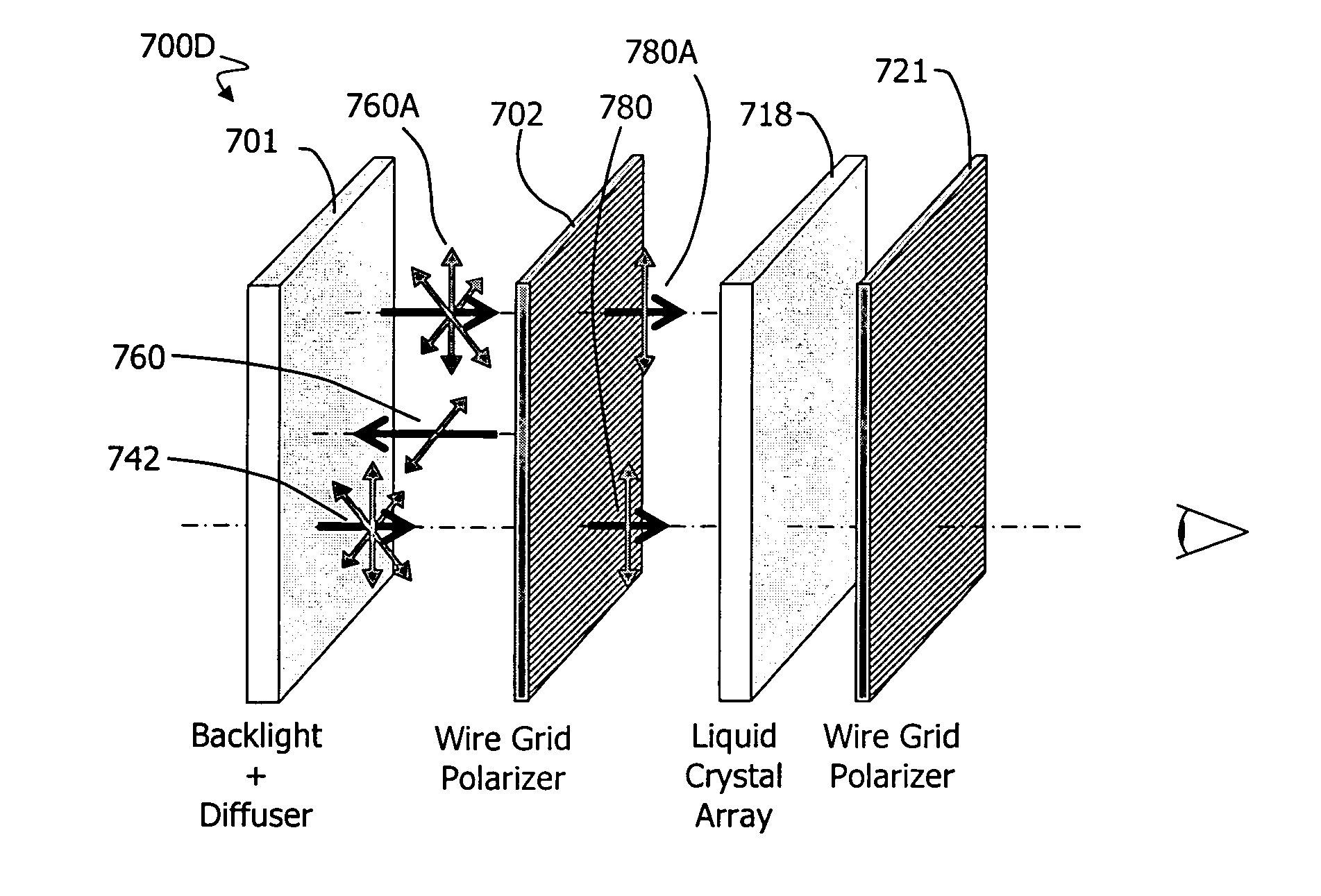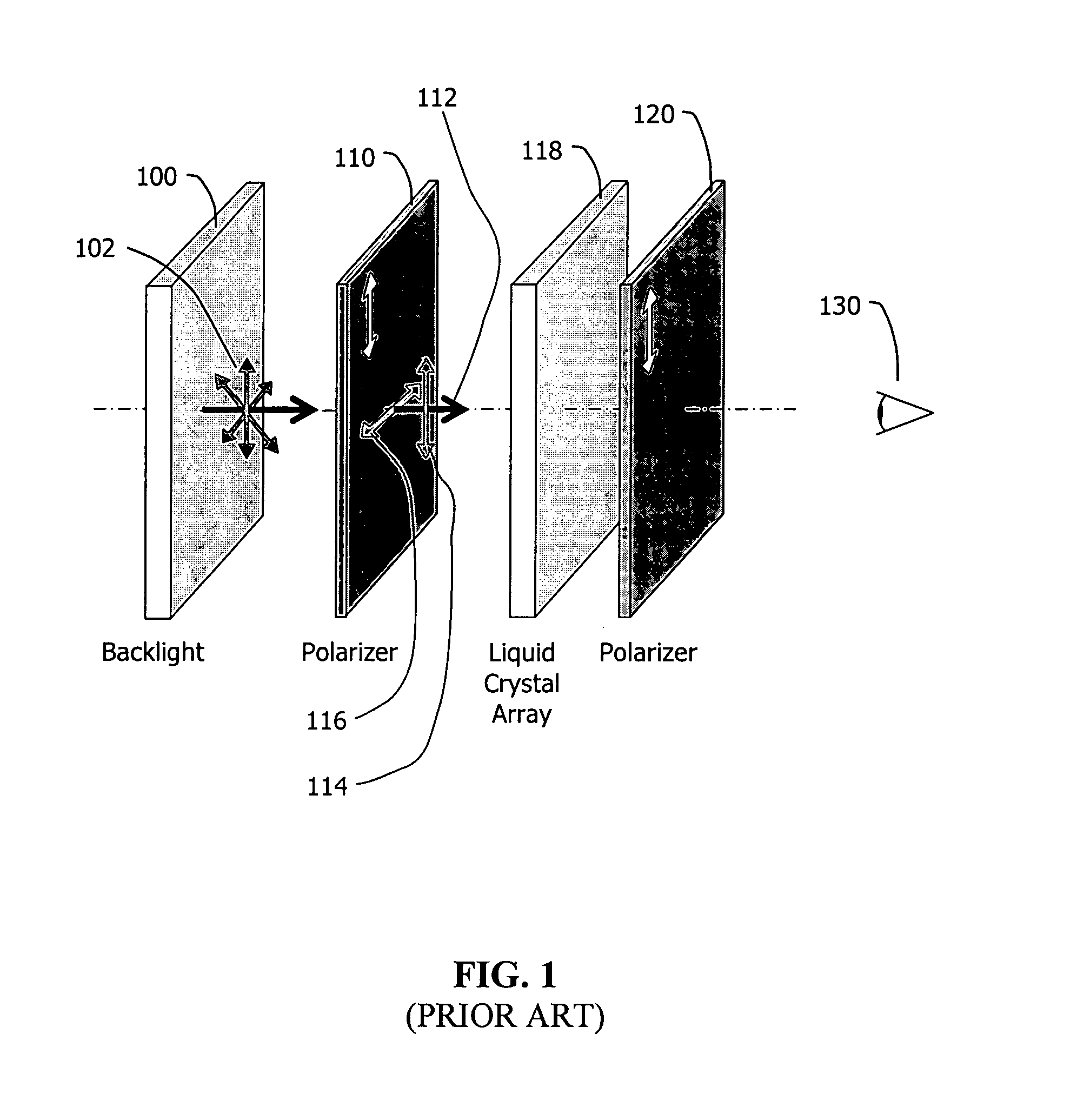Applications and fabrication techniques for large scale wire grid polarizers
a polarizer and wire grid technology, applied in the field of wire grid polarizers, can solve the problems of poor extinction ratio of reflective polarizers, low net transmission of backlight illumination, and low efficiency of absorption-type polarizers
- Summary
- Abstract
- Description
- Claims
- Application Information
AI Technical Summary
Benefits of technology
Problems solved by technology
Method used
Image
Examples
Embodiment Construction
[0038]Although the following detailed description contains many specific details for the purposes of illustration, anyone of ordinary skill in the art will appreciate that many variations and alterations to the following details are within the scope of the invention. Accordingly, the exemplary embodiments of the invention described below are set forth without any loss of generality to, and without imposing limitations upon, the claimed invention.
[0039]A first embodiment of the present invention provides a method for forming a wire grid polarizer characterized by parallel conductive lines of periodicities suitable for operation in the visible and infrared spectra. Unlike prior art techniques that rely upon photolithography to achieve the requisite small periodicities, the method of the present does not employ any photolithography and is therefore not subject to the resultant limitation of device size and capital equipment cost attendant to photolithographic processes. As such, large-...
PUM
| Property | Measurement | Unit |
|---|---|---|
| length | aaaaa | aaaaa |
| width | aaaaa | aaaaa |
| length | aaaaa | aaaaa |
Abstract
Description
Claims
Application Information
 Login to View More
Login to View More - R&D
- Intellectual Property
- Life Sciences
- Materials
- Tech Scout
- Unparalleled Data Quality
- Higher Quality Content
- 60% Fewer Hallucinations
Browse by: Latest US Patents, China's latest patents, Technical Efficacy Thesaurus, Application Domain, Technology Topic, Popular Technical Reports.
© 2025 PatSnap. All rights reserved.Legal|Privacy policy|Modern Slavery Act Transparency Statement|Sitemap|About US| Contact US: help@patsnap.com



